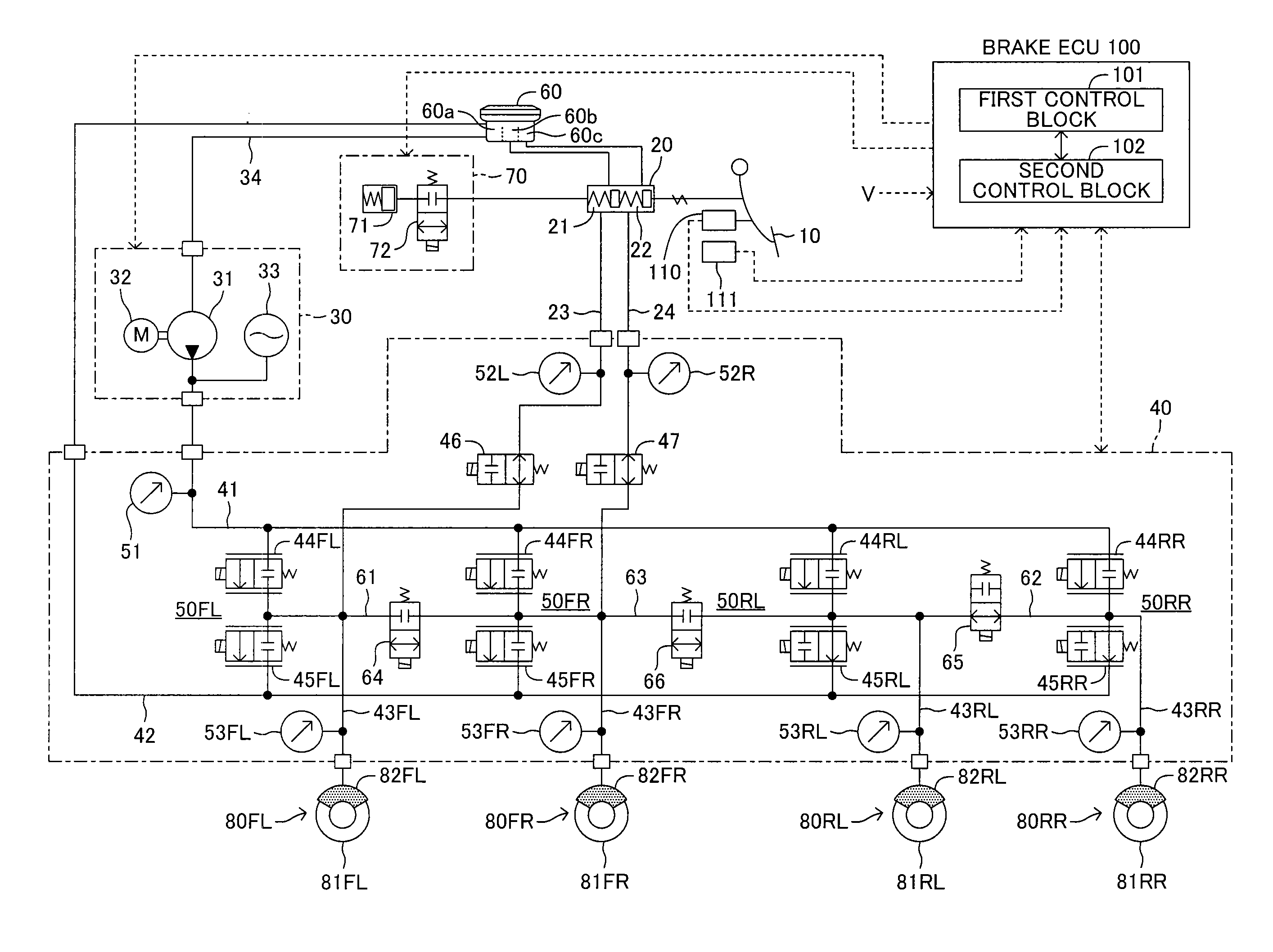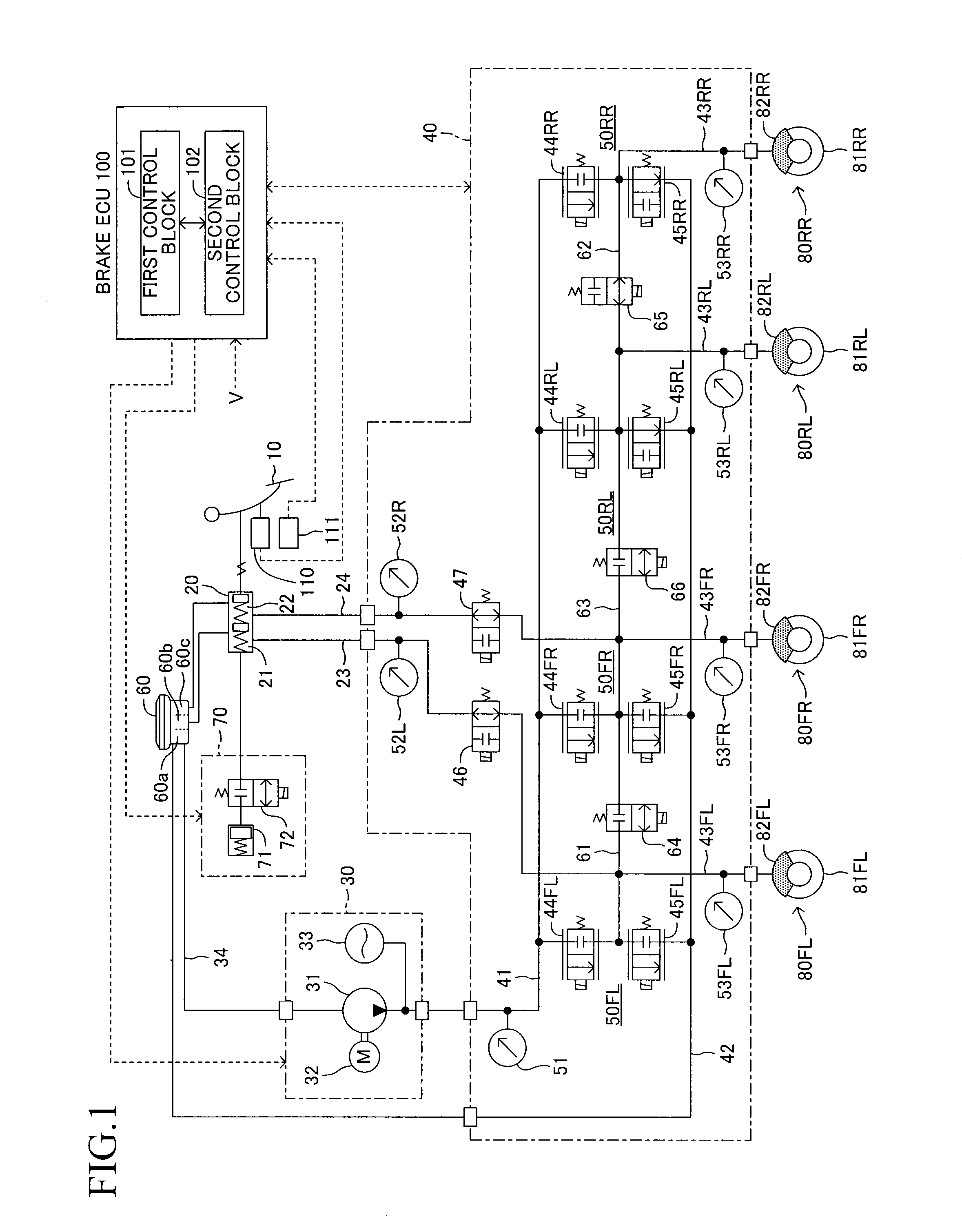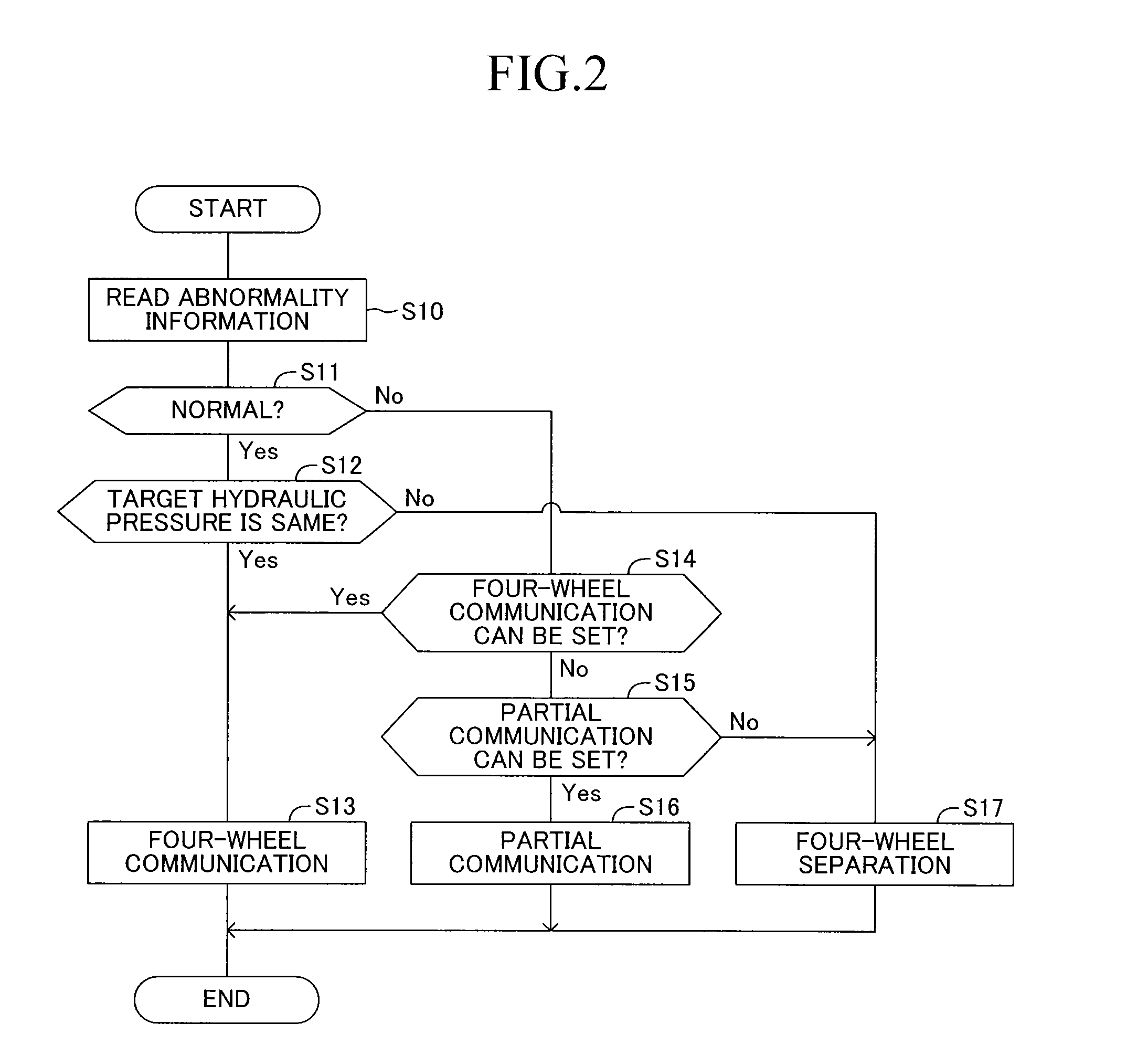Vehicle brake control device
- Summary
- Abstract
- Description
- Claims
- Application Information
AI Technical Summary
Benefits of technology
Problems solved by technology
Method used
Image
Examples
first embodiment
[0177]FIG. 17 is a flowchart illustrating the remaining hydraulic pressure prevention control in step S40. After starting the remaining hydraulic pressure prevention routine, the brake ECU 100 reads the wheel cylinder pressures PwFL and PwFR for the front wheels detected by the hydraulic pressure sensors 53FL and 53FR in step S401. Then, the brake ECU 100 determines in step S402 whether a remaining hydraulic pressure occurs or not based on the wheel cylinder pressures PwFL and PwFR. For example, the brake ECU 100 compares the wheel cylinder pressures PwFL and PwFR and a remaining hydraulic pressure determination threshold values Pwref. When at least one of the wheel cylinder pressures PwFL and PwFR is larger than the remaining hydraulic pressure determination threshold values Pwref, the brake ECU 100 determines that the remaining hydraulic pressure occurs. When determining that the remaining hydraulic pressure does not occur (S402: No), the brake ECU 100 closes the pressure-decreasi...
third embodiment
[0186]FIG. 19 is a flowchart illustrating the third embodiment involved with the remaining hydraulic pressure prevention process in step S40. The processes same as those in the remaining hydraulic pressure prevention routine in FIG. 17 are identified by the same reference numerals, and these processes will merely briefly be described. After the remaining hydraulic pressure prevention routine is started, the brake ECU 100 reads the wheel cylinder pressures PwFL and PwFR for the front wheels in step S401. Then, the brake ECU 100 determines in step S402 whether a remaining hydraulic pressure occurs or not based on the wheel cylinder pressures PwFL and PwFR. When determining that the remaining hydraulic pressure does not occur (S402: No), the brake ECU 100 determines in step S421 whether the master cut valves 46 and 47 are now opened or not. Just after the remaining hydraulic pressure prevention routine is started, the master cut valves 46 and 47 are closed. Therefore, the brake ECU 100...
fourth embodiment
[0194]FIG. 20 is a flowchart illustrating the fourth embodiment involved with the remaining hydraulic pressure prevention process in step S40. The processes same as those in the remaining hydraulic pressure prevention routine in FIG. 19 are identified by the same reference numerals, and these processes will merely briefly be described. After the remaining hydraulic pressure prevention routine is started, the brake ECU 100 reads the wheel cylinder pressures PwFL and PwFR for the front wheels in step S401. Then, the brake ECU 100 determines in step S402 whether a remaining hydraulic pressure occurs or not based on the wheel cylinder pressures PwFL and PwFR. When determining that the remaining hydraulic pressure does not occur (S402: No), the brake ECU 100 keeps the master cut valves 46 and 47 closed.
[0195]On the other hand, when determining that the remaining hydraulic pressure occurs on at least one of the wheel cylinders 82FL and 82FR (S402: Yes), the brake ECU 100 opens the master ...
PUM
 Login to View More
Login to View More Abstract
Description
Claims
Application Information
 Login to View More
Login to View More - R&D
- Intellectual Property
- Life Sciences
- Materials
- Tech Scout
- Unparalleled Data Quality
- Higher Quality Content
- 60% Fewer Hallucinations
Browse by: Latest US Patents, China's latest patents, Technical Efficacy Thesaurus, Application Domain, Technology Topic, Popular Technical Reports.
© 2025 PatSnap. All rights reserved.Legal|Privacy policy|Modern Slavery Act Transparency Statement|Sitemap|About US| Contact US: help@patsnap.com



